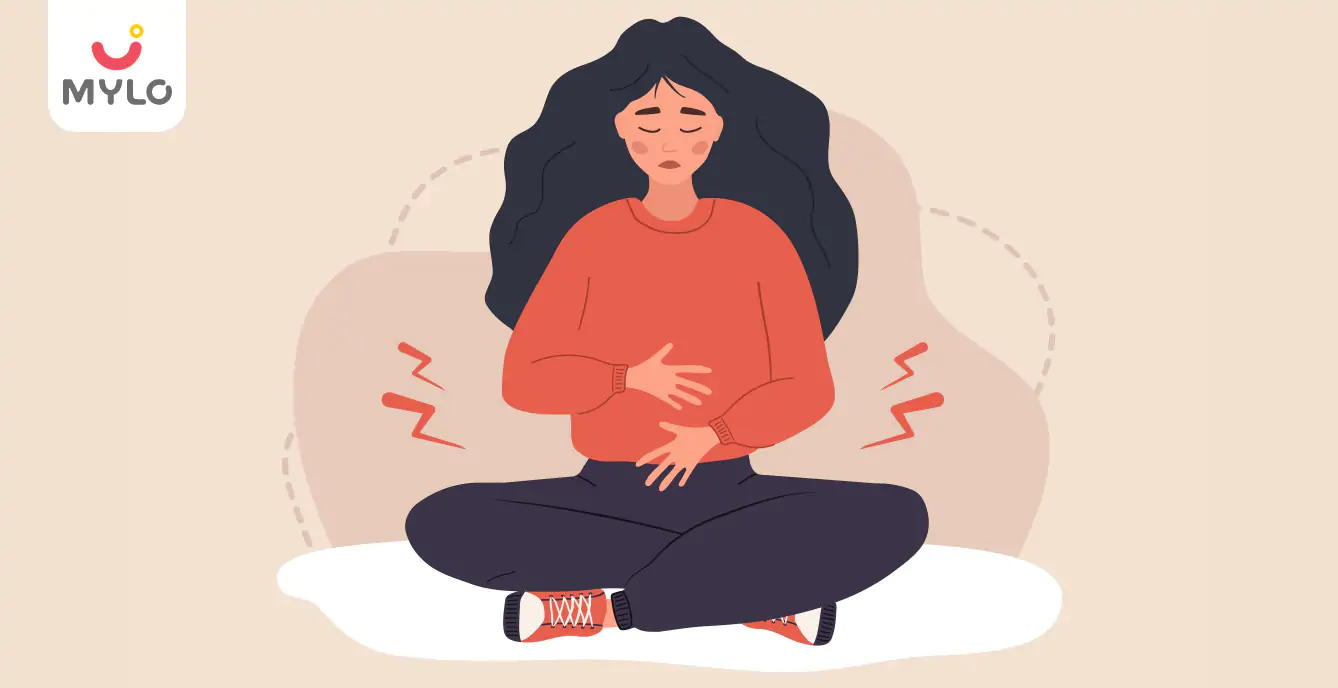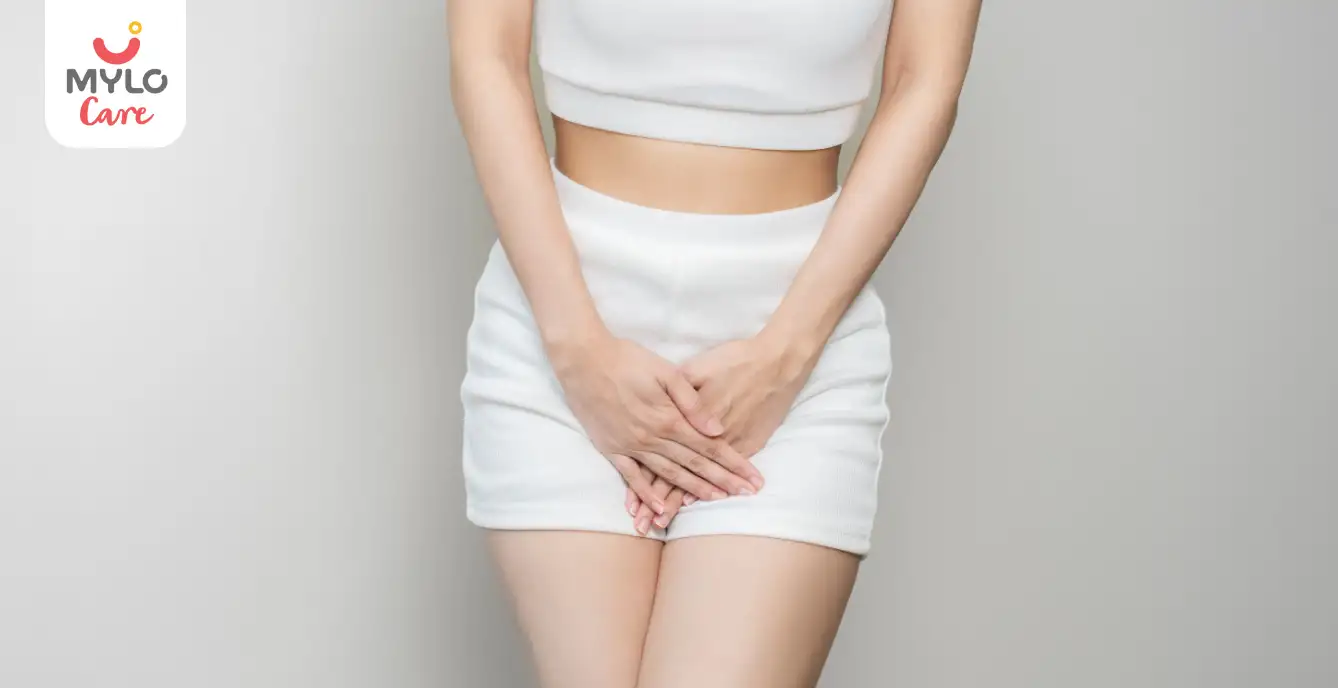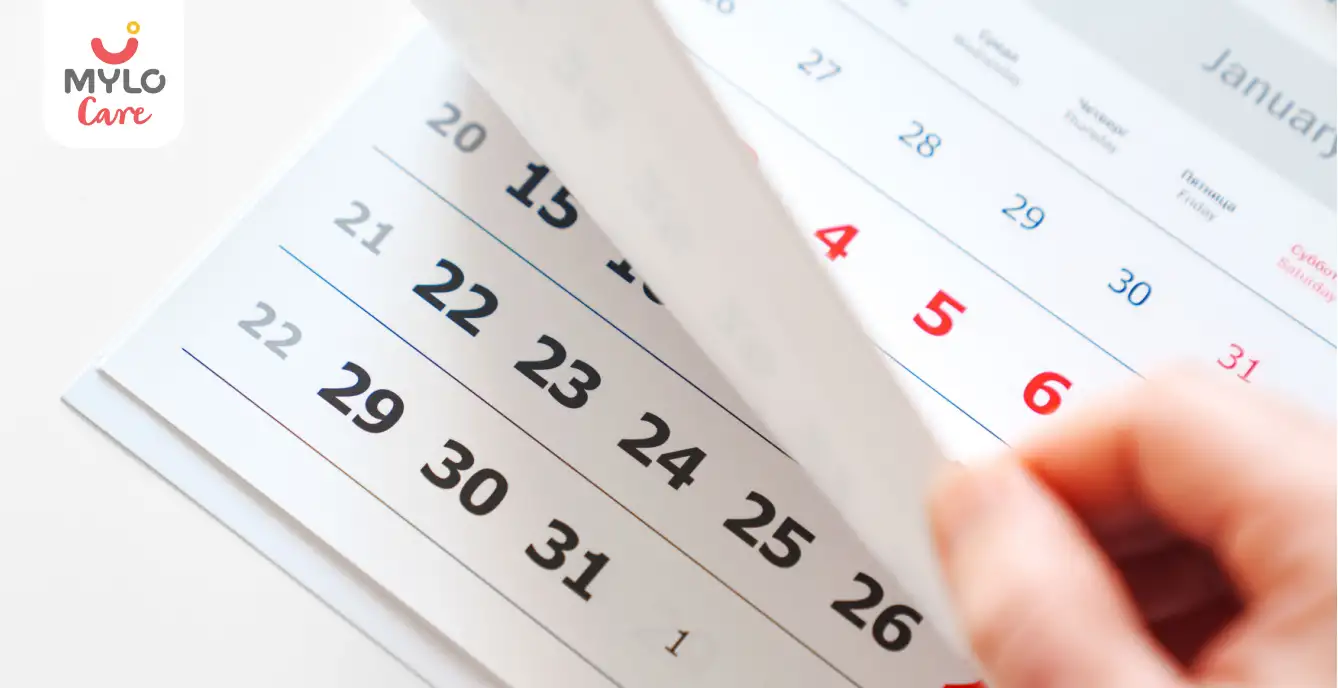Home

Ovulation

Ovulation Pain: Is It Normal or a Cause for Concern?
In this Article
Ovulation
Ovulation Pain: Is It Normal or a Cause for Concern?
Updated on 7 December 2023
Have you ever experienced that sharp, twinge-like pain in your lower abdomen? You know, the kind that catches you off guard and leaves you wondering what on earth is going on? Well, my friend, you might just be experiencing ovulation pain. But wait, before you start panicking or assuming the worst, let's find out if this pain is normal or if it warrants a trip to the doctor's office.
In this article, we'll explore the causes, symptoms, and potential concerns associated with ovulation cramps and pain.
Is it normal to feel pain during ovulation?
Many women experience pain or discomfort during ovulation, and wonder whether this is a normal occurrence or a cause for concern. The truth is, feeling some level of pain or discomfort during ovulation is actually quite common and usually nothing to worry about.
It also known as mittelschmerz, is a term that refers to the abdominal pain or discomfort that some women experience around the time of ovulation. It is typically a mild and brief sensation, but in some cases, it can be more intense and last longer.
The exact cause of abdominal pain during ovulation is not fully understood, but it is believed to be related to the release of an egg from the ovary. When an egg is released, it can cause a small amount of bleeding, which may irritate the lining of the abdomen and result in pain.
You may also like: Can You Detect Ovulation or Pregnancy Using Basal Body Temperature?
Ovulation pain area: where do you feel the pain?
The ovulation pain location can vary from woman to woman, but it is typically felt on one side of the lower abdomen. The pain is often described as a sharp or cramp-like sensation and may be accompanied by a feeling of fullness or bloating.
Some women may also experience pain in the lower back or pelvic area. It is important to note that the pain is usually localized and not widespread. If you are experiencing pain while ovulating, it can be helpful to keep track of the location and intensity of the pain. This information can be useful when discussing your symptoms with a healthcare provider.
Ovulation pain symptoms
In addition to abdominal pain, there are a few other symptoms that may be associated with pain during ovulation. These can include:
1. Changes in cervical mucus
Many women notice changes in the consistency and appearance of their cervical mucus around the time of ovulation. It may become thinner and more slippery, similar to the consistency of egg whites.
2. Breast tenderness
Some women experience mild breast tenderness or swelling during ovulation. This is thought to be due to hormonal changes that occur during the menstrual cycle.
3. Increased libido
Some women may notice an increase in sexual desire or libido around the time of ovulation. This is believed to be nature's way of ensuring that couples have a higher chance of conceiving during the most fertile period of the menstrual cycle.
It is important to remember that not all women will experience these symptoms, and the presence or absence of these symptoms does not necessarily indicate a problem.
What are the causes of abdominal pain during ovulation?
While ovulation pain is generally considered normal, there are a few underlying causes that can contribute to the discomfort, such as:
1. Follicle growth and rupture
The growth and subsequent rupture of a follicle in the ovary can cause pain and discomfort. This is the most common cause of abdominal pain during and after ovulation.
2. Ovarian cysts
Occasionally, a cyst may form on the ovary, which can lead to pain or cramping during ovulation. Most cysts are harmless and resolve on their own, but in some cases, medical intervention may be necessary.
3. Endometriosis
This is a condition in which the tissue that normally lines the uterus grows outside of the uterus. It can cause pain during ovulation, as well as during other times of the menstrual cycle.
4. Pelvic inflammatory disease (PID)
PID is an infection of the reproductive organs and can cause abdominal pain during ovulation. It is usually accompanied by other symptoms such as fever, vaginal discharge, and pain during intercourse.
5. Adhesions
Adhesions are bands of scar tissue that can form in the abdomen and pelvis. They can cause pain and discomfort during ovulation by pulling on the reproductive organs.
6. Ectopic pregnancy
Although rare, an ectopic pregnancy occurs when a fertilized egg implants outside of the uterus, usually in the fallopian tube. This can cause severe abdominal pain and requires immediate medical attention.
If you are experiencing severe or persistent cramping during ovulation, it is important to consult with a healthcare provider to determine the underlying cause and appropriate treatment.
How long does ovulation pain last?
The duration of pain can vary from woman to woman. For some, the pain may only last a few minutes, while for others, it can persist for a few hours or even a day. The intensity of the pain can also vary, with some women experiencing only mild discomfort and others experiencing more severe cramping.
It is important to note that abdominal pain during ovulation pain is typically short-lived and should not interfere with daily activities. If the pain is severe, lasts longer than a day, or is accompanied by other concerning symptoms, it is advisable to seek medical attention to rule out any underlying conditions.
How long after ovulation pain is the egg released?
According to a study published in the Journal of Reproductive Medicine, ovulation typically occurs 12 to 36 hours after the onset of ovulation pain. This means that the egg is usually released within a day or so after experiencing pain.
It's important to note that ovulation cramps are caused by the maturing egg preparing to be released or the actual release of the egg. So, if you're feeling cramping during ovulation, it's a sign that the egg is likely to be released soon or has already been released.
You may also like: Signs Ovulation is Over: Your Guide to Understanding the End of Ovulation
Is it normal to feel lower abdominal pain after ovulation?
Feeling lower abdominal pain post-ovulation can also be a common occurrence for some women. This pain is often referred to as post-ovulation pain and is usually mild and short-lived. It is believed to be caused by the release of hormones and the changes that occur in the reproductive organs after ovulation.
In some cases, abdominal pain after ovulation can be a sign of implantation, which occurs when a fertilized egg attaches to the lining of the uterus. However, it is important to note that not all women will experience implantation pain, and the presence or absence of this symptom does not necessarily indicate pregnancy.
If you are experiencing lower abdominal pain after ovulation that is severe, persistent, or accompanied by other concerning symptoms, it is recommended to consult with a healthcare provider for further evaluation.
You may also like: White Discharge After Ovulation: A Normal Occurrence or Cause for Concern?
When to be concerned?
While ovulation cramps and pain are generally considered normal, there are certain instances when it may be a cause for concern. If you experience any of the following symptoms in addition to pain, it is advisable to seek medical attention:
1. Severe or persistent pain
If the pain is severe, lasts longer than a day, or is significantly impacting your daily activities, it is important to consult with a healthcare provider to rule out any underlying conditions.
2. Abnormal bleeding
If you experience heavy or prolonged bleeding during or after ovulation, it may be a sign of a more serious issue and should be evaluated by a healthcare professional.
3. Fever or signs of infection
If you have a fever, chills, or other symptoms of infection such as vaginal discharge, it may indicate an underlying infection that requires medical treatment.
4. Difficulty conceiving
If you have been trying to conceive for a significant amount of time without success, it may be worth discussing your symptoms with a fertility specialist to rule out any fertility issues.
Remember, it is always better to err on the side of caution and seek medical attention if you have any concerns about pain during ovulation or if the pain is affecting your daily life.
The Bottomline
In conclusion, ovulation pain is generally considered normal and is often a result of the release of an egg from the ovary. The pain is typically felt on one side of the lower abdomen and may be accompanied by other symptoms such as changes in cervical mucus, breast tenderness, or increased libido. While the pain is usually mild and short-lived, there are certain instances when it may be a cause for concern. If you have any concerns about your pain, it is always best to consult with a healthcare provider for further evaluation and guidance.
References
1. Brott NR, Le JK. Mittelschmerz. (2023). In: StatPearls [Internet]. Treasure Island (FL): StatPearls Publishing
2. Sohda S, Suzuki K, Igari I. (2017). Relationship Between the Menstrual Cycle and Timing of Ovulation Revealed by New Protocols: Analysis of Data from a Self-Tracking Health App. J Med Internet Res.
3. Charlewood GP. Ovulation Pain. (1965). Br Med J.
4. Marinho AO, Sallam HN, Goessens L, Collins WP, Campbell S. (1982). Ovulation side and occurrence of mittelschmerz in spontaneous and induced ovarian cycles. Br Med J (Clin Res Ed).



Written by
Anupama Chadha
Anupama Chadha, born and raised in Delhi is a content writer who has written extensively for industries such as HR, Healthcare, Finance, Retail and Tech.
Read MoreGet baby's diet chart, and growth tips

Related Articles
Related Topics
RECENTLY PUBLISHED ARTICLES
our most recent articles

Diet & Nutrition
Special Home Remedies For Gas During Pregnancy

PCOS & PCOD
PCOD Problem After Marriage: Debunking Common Misconceptions and Finding Solutions

Ovulation
White Discharge After Ovulation: A Normal Occurrence or Cause for Concern?

Ovaries
Normal Ovary Size: How It Varies and What It Means for You

Festivals & Celebrations
2024 Calendar with Holidays and Festivals of India

Abortion
After-Abortion Sex: A Guide to Physical and Emotional Wellness
- Cervical Cerclage: A Closer Look at the Procedure and Its Benefits
- The Ultimate Guide to Panchatantra Stories for Kids
- Which Is Better Normal Or Cesarean Delivery
- How to Get Baby in Right Position for Birth?
- Paheliyan 101: Riddles for Kids That Educate and Entertain
- The ABCs of Cephalic Presentation: A Comprehensive Guide for Moms-to-Be
- The Ultimate Guide to Consuming Chia Seeds in Pregnancy
- Essential Tips for Normal Delivery After Cesarean
- Crab During Pregnancy: Benefits, Risks and Smart Choices
- Normal Delivery Tips: An Expecting Mother's Guide to a Smooth Childbirth Experience
- Top 10 Panchatantra Stories in English You Must Read to Your Children
- What Helps in Improving Mental Health of Women
- Childhood Disorders: Meaning, Symptoms & Treatment
- Bleeding During Pregnancy 8 Weeks: Should You See a Doctor?


AWARDS AND RECOGNITION

Mylo wins Forbes D2C Disruptor award

Mylo wins The Economic Times Promising Brands 2022
AS SEEN IN
















- Mylo Care: Effective and science-backed personal care and wellness solutions for a joyful you.
- Mylo Baby: Science-backed, gentle and effective personal care & hygiene range for your little one.
- Mylo Community: Trusted and empathetic community of 10mn+ parents and experts.
Product Categories
baby carrier | baby soap | baby wipes | stretch marks cream | baby cream | baby shampoo | baby massage oil | baby hair oil | stretch marks oil | baby body wash | baby powder | baby lotion | diaper rash cream | newborn diapers | teether | baby kajal | baby diapers | cloth diapers |








